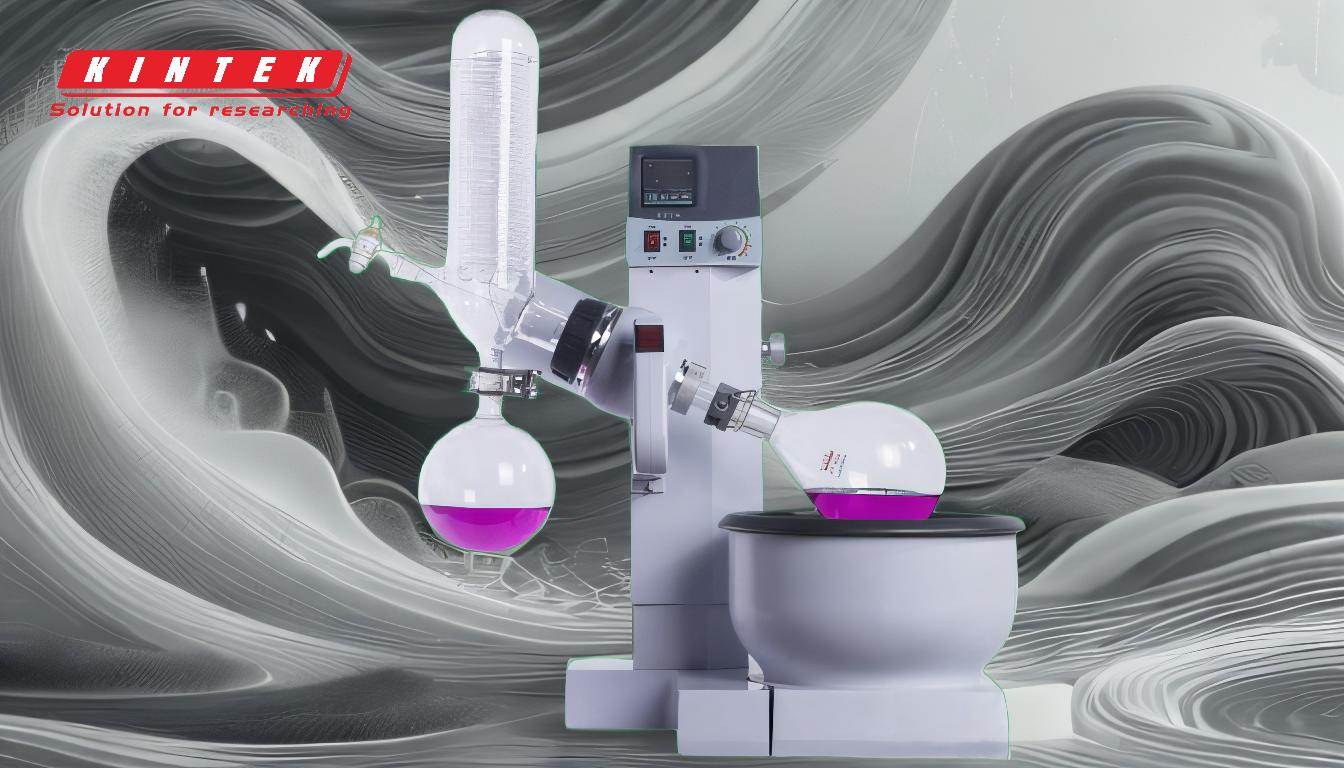Rotary evaporation is a laboratory technique used to efficiently and gently remove solvents from samples by reducing pressure and applying heat. The process involves rotating a flask containing the sample in a heated water bath while a vacuum is applied, which lowers the boiling point of the solvent. This creates a thin film of the solvent inside the flask, enhancing evaporation. The evaporated solvent is then condensed in a cooling system and collected in a separate flask. This method is particularly useful for concentrating non-volatile compounds or isolating solvents without damaging heat-sensitive materials.
Key Points Explained:

-
Setup and Preparation:
- Flask Filling: The sample flask is filled to no more than 50% of its capacity to prevent spillage during rotation.
- Bump Trap Installation: A bump trap is often used to prevent the sample from splashing into the condenser, especially when dealing with volatile solvents.
-
Application of Vacuum:
- Vacuum Pump: A vacuum pump is used to reduce the pressure inside the system, which lowers the boiling point of the solvent, allowing it to evaporate at lower temperatures.
- Gradual Vacuum Increase: The vacuum is applied gradually to prevent sudden boiling, which can cause bumping and loss of sample.
-
Rotation and Heating:
- Rotation Speed: The flask is rotated at a speed of 150-200 rpm, creating a thin film of the solvent on the inner surface of the flask, which increases the surface area for evaporation.
- Water Bath Temperature: The water bath is heated to a temperature typically between 30-40°C, which is sufficient to encourage evaporation without causing thermal degradation of the sample.
-
Condensation and Collection:
- Condenser Cooling: The condenser is cooled to a temperature between -10°C to 0°C to ensure efficient condensation of the solvent vapors.
- Collection Flask: The condensed solvent is collected in a separate flask, effectively separating it from the less volatile components of the sample.
-
Monitoring and Adjustment:
- Observation: The process is closely monitored for signs of condensation or bubbling, which indicate active evaporation.
- Adjustments: The vacuum and temperature may be adjusted as needed to optimize the evaporation rate and ensure complete removal of the solvent.
-
Completion:
- Stopping the Process: Once all the solvent has been evaporated, the rotation and vacuum are stopped, and the system is returned to atmospheric pressure.
- Sample Recovery: The remaining sample in the flask is then ready for further processing or analysis.
This method is highly effective for concentrating solutions, purifying compounds, and recovering solvents, making it a staple in many chemical and biochemical laboratories.
Summary Table:
| Key Step | Details |
|---|---|
| Setup and Preparation | - Fill flask ≤ 50% capacity. Use a bump trap for volatile solvents. |
| Application of Vacuum | - Use a vacuum pump to lower boiling point. Apply vacuum gradually. |
| Rotation and Heating | - Rotate flask at 150-200 rpm. Heat water bath to 30-40°C. |
| Condensation and Collection | - Cool condenser to -10°C to 0°C. Collect solvent in a separate flask. |
| Monitoring and Adjustment | - Monitor for condensation/bubbling. Adjust vacuum and temperature as needed. |
| Completion | - Stop rotation/vacuum. Recover sample for further processing. |
Discover how rotary evaporation can optimize your lab processes—contact us today for expert advice!












